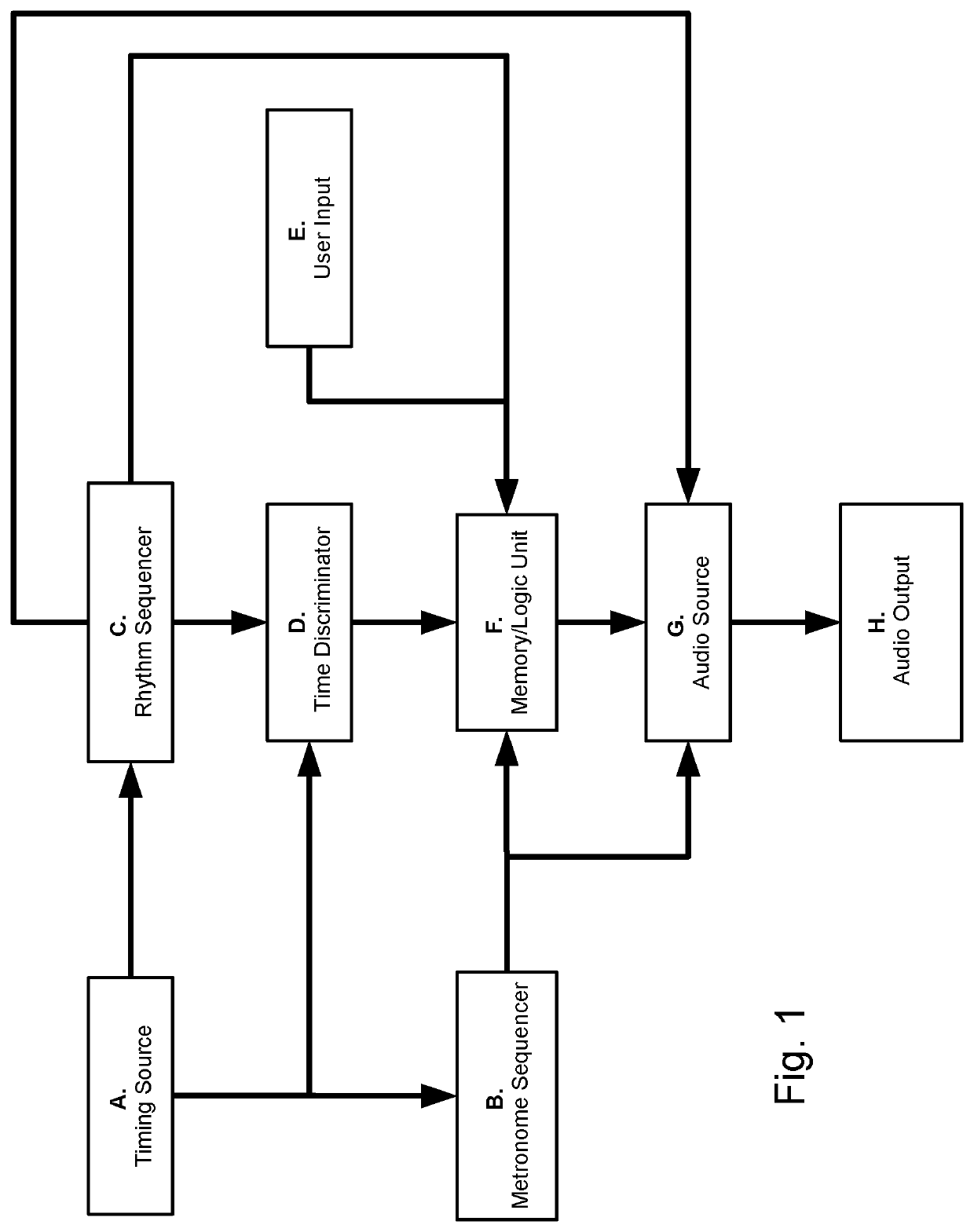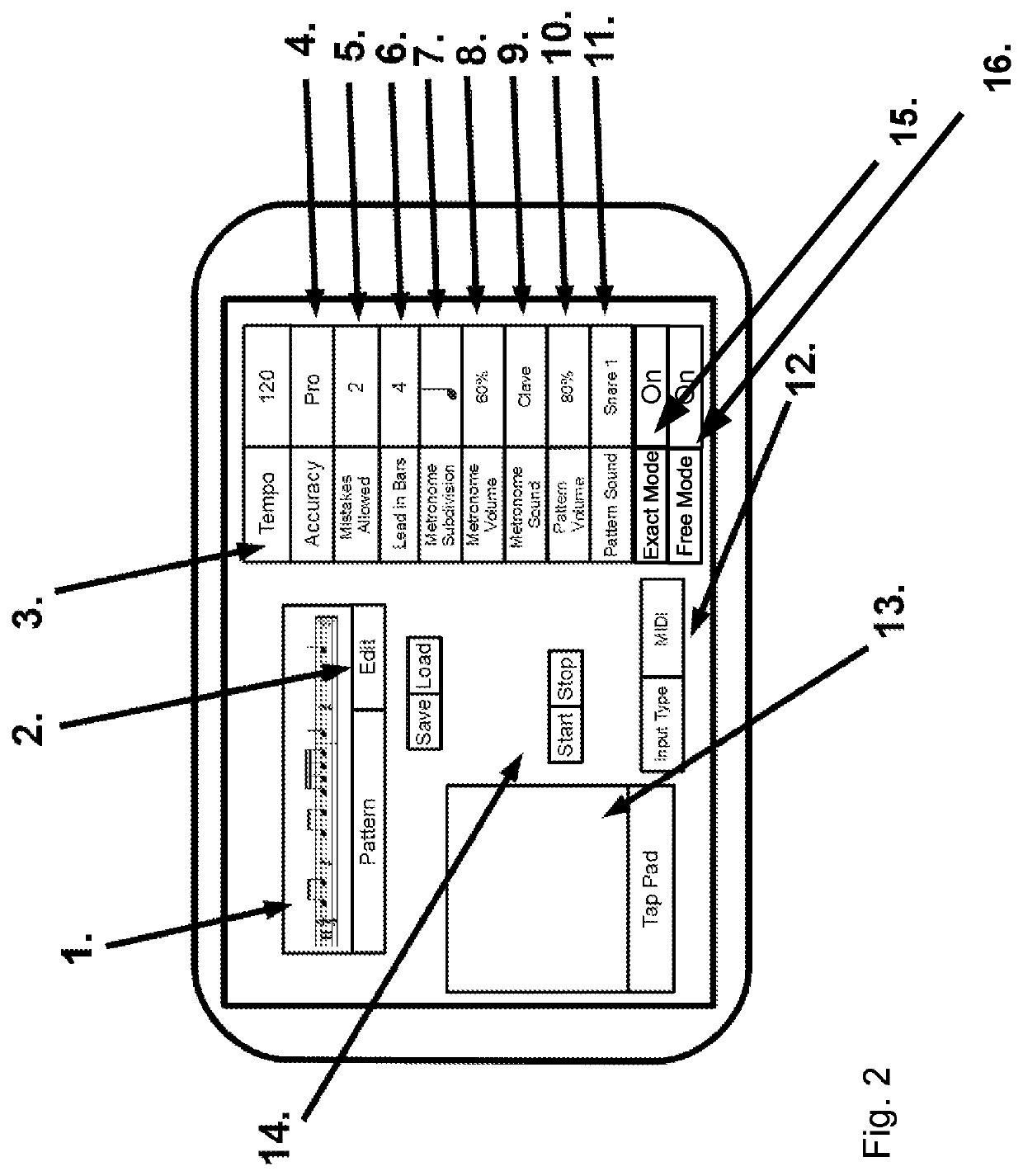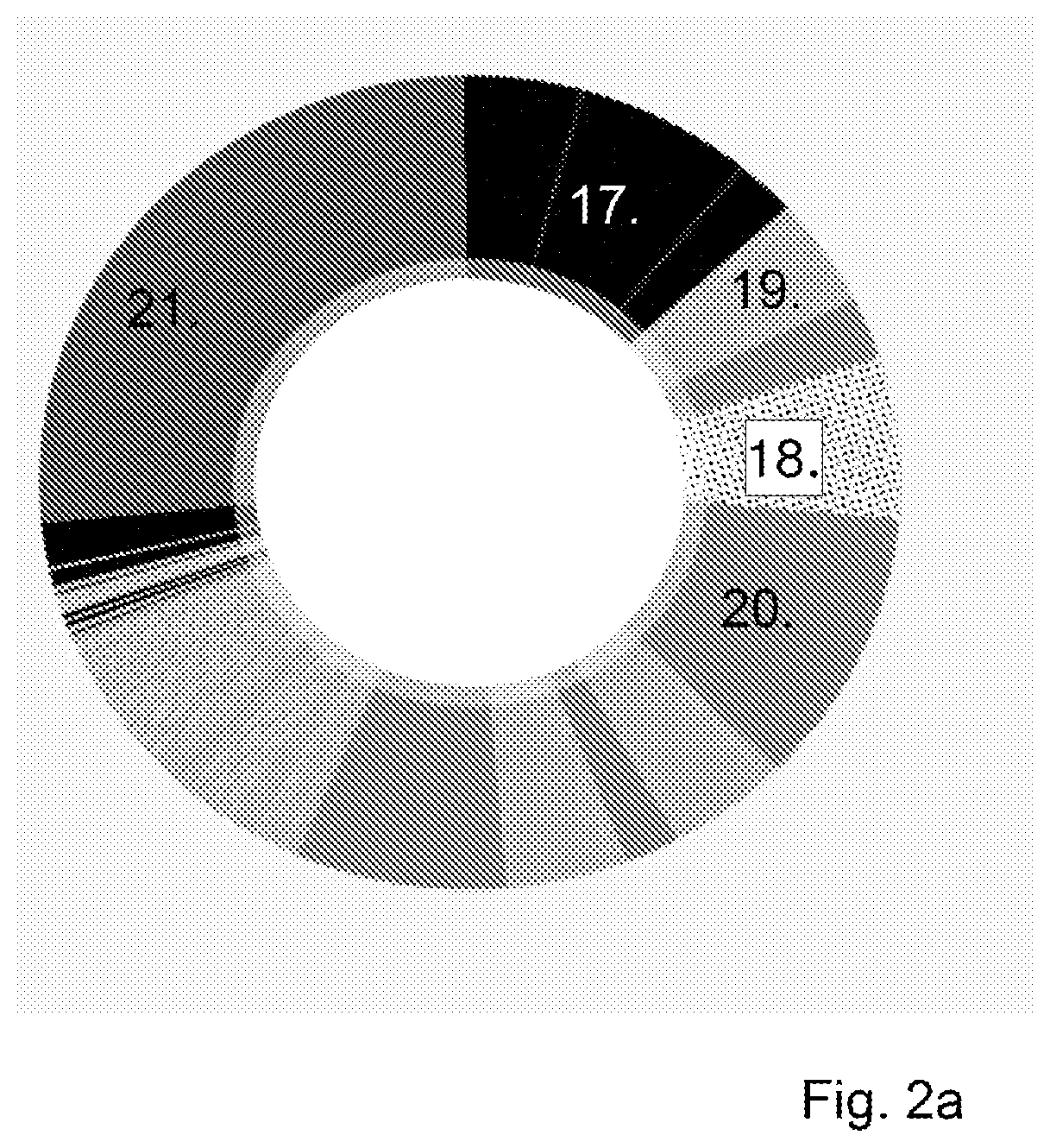Method, system, app or kit of parts for teaching musical rhythm, in particular percussion
a technology of musical rhythm and parts, applied in the field of musical rhythm teaching, can solve the problems of inability to maintain tempo stability, unconfident other musicians, and sloppy drum beats, and achieve the effect of ensuring the accuracy of the tempo and stability of the percussion
- Summary
- Abstract
- Description
- Claims
- Application Information
AI Technical Summary
Benefits of technology
Problems solved by technology
Method used
Image
Examples
Embodiment Construction
[0071]Use of the method or system of the invention preferably begins with playback of a metronome and / or sequenced version of the rhythmic pattern to be rehearsed for a number of bars, to allow the user to begin to play ‘in sync’ with the target pattern. The audible output is then silenced while the user continues to play the pattern. A time discrimination mechanism determines whether the strikes played by the user fall within an allowable time window equally spaced before and after each sequenced note of the rhythmic pattern. Should each user strike fall within the time window of the corresponding sequenced note, the audible output will continue to remain silenced indefinitely.
[0072]Conversely, if a user's strikes fall outside the allowable time window, the audible output is reintroduced on the subsequent note of the pattern or beat of the metronome, and then continues in a non-suppressed state for a pre-determined number of bars of the pattern, enabling the user to re-synchronise ...
PUM
 Login to View More
Login to View More Abstract
Description
Claims
Application Information
 Login to View More
Login to View More - R&D
- Intellectual Property
- Life Sciences
- Materials
- Tech Scout
- Unparalleled Data Quality
- Higher Quality Content
- 60% Fewer Hallucinations
Browse by: Latest US Patents, China's latest patents, Technical Efficacy Thesaurus, Application Domain, Technology Topic, Popular Technical Reports.
© 2025 PatSnap. All rights reserved.Legal|Privacy policy|Modern Slavery Act Transparency Statement|Sitemap|About US| Contact US: help@patsnap.com



